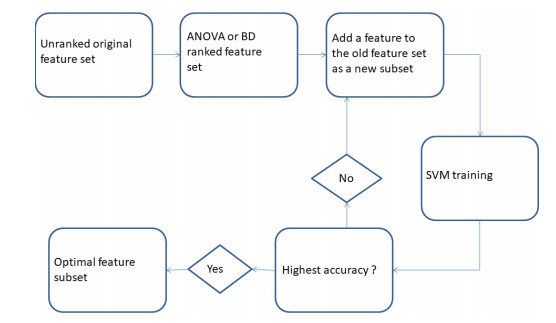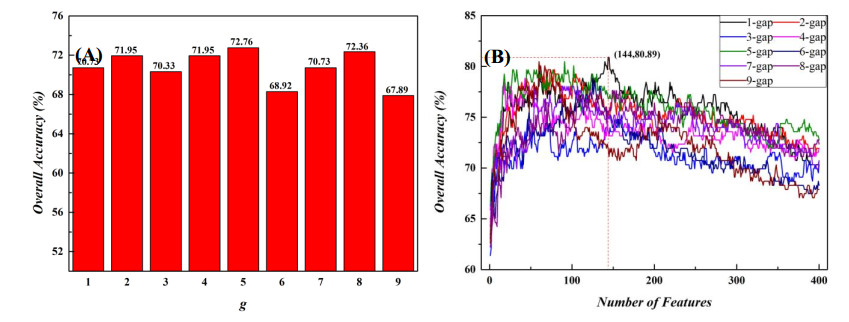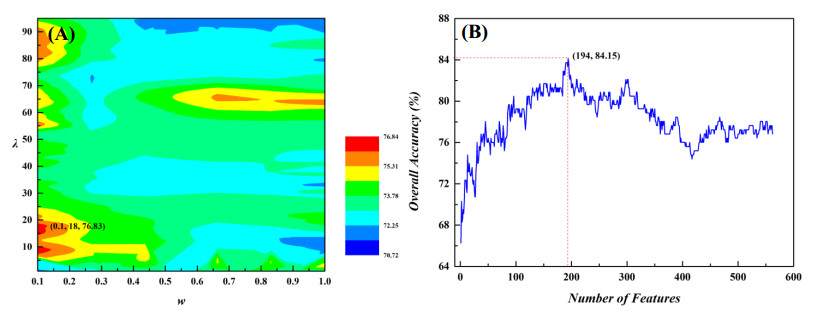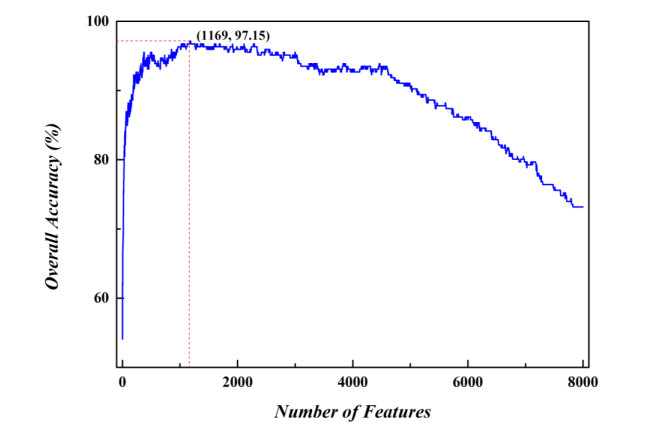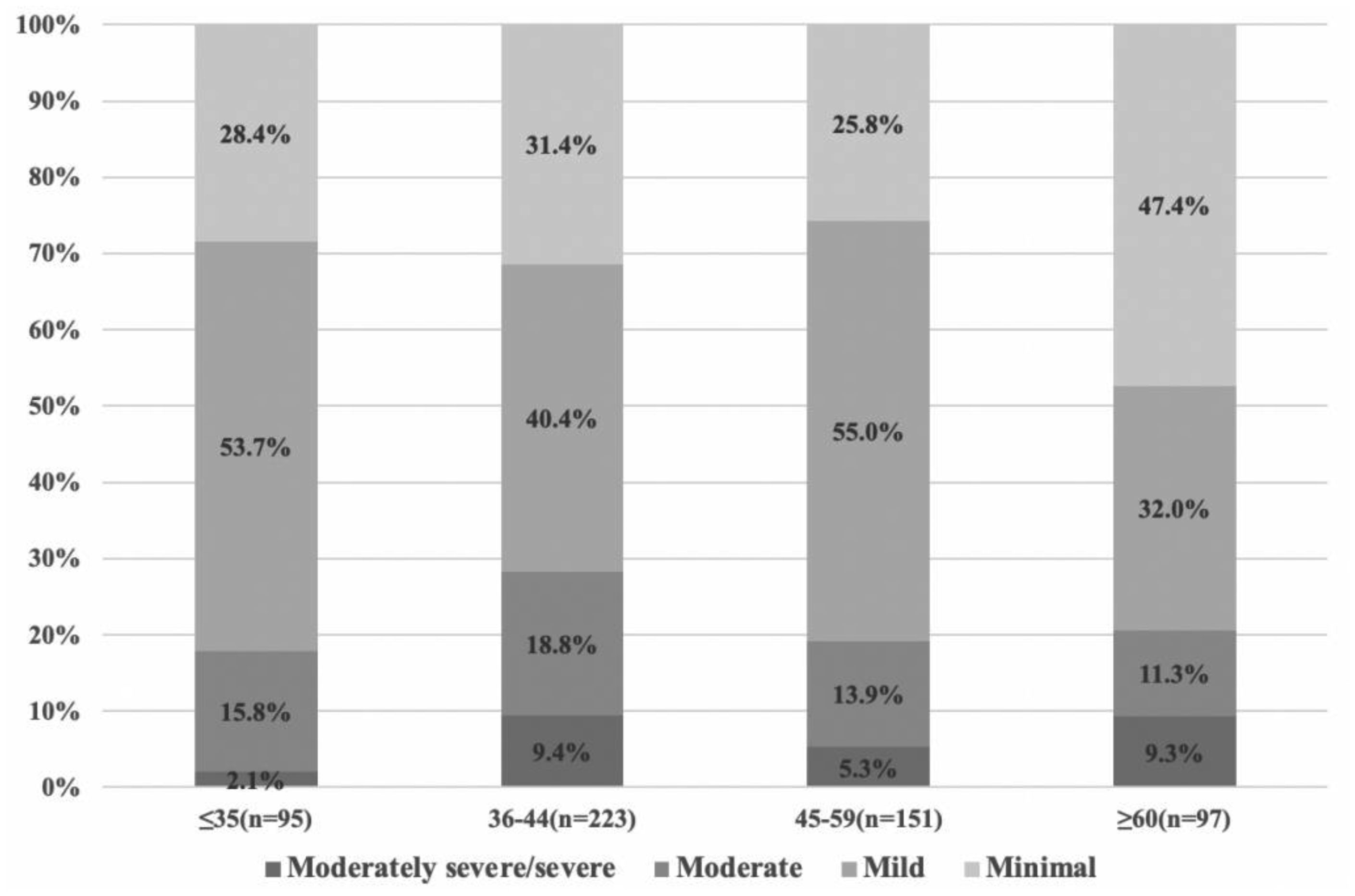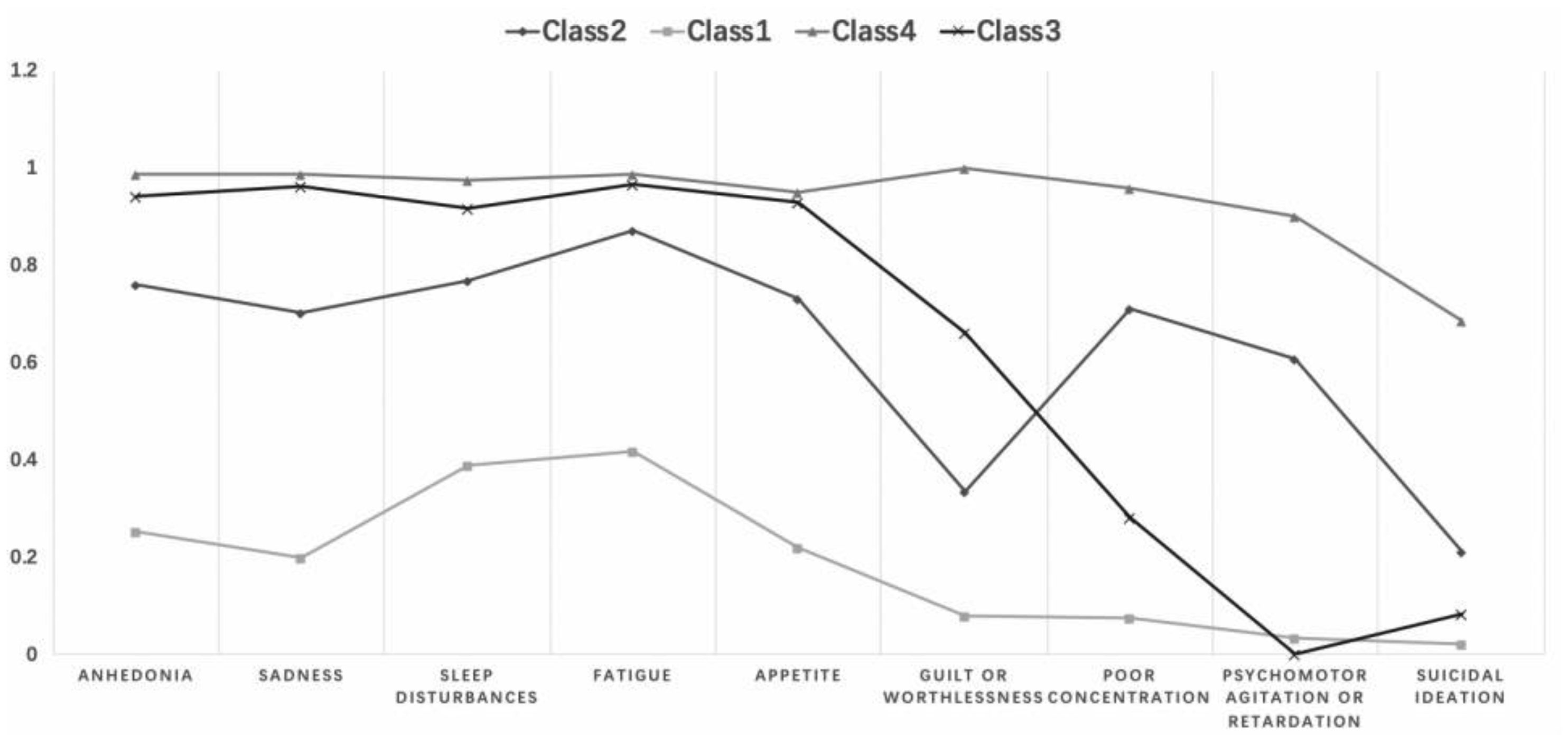| 1.
|
Zhihua Chen, Xinke Wang, Peng Gao, Hongju Liu, Bosheng Song,
Predicting Disease Related microRNA Based on Similarity and Topology,
2019,
8,
2073-4409,
1405,
10.3390/cells8111405
|
|
| 2.
|
Lei Zheng, Dongyang Liu, Wuritu Yang, Lei Yang, Yongchun Zuo,
RaacLogo: a new sequence logo generator by using reduced amino acid clusters,
2020,
1467-5463,
10.1093/bib/bbaa096
|
|
| 3.
|
Leyi Wei, Wenjia He, Adeel Malik, Ran Su, Lizhen Cui, Balachandran Manavalan,
Computational prediction and interpretation of cell-specific replication origin sites from multiple eukaryotes by exploiting stacking framework,
2020,
1467-5463,
10.1093/bib/bbaa275
|
|
| 4.
|
Chaolu Meng, Shunshan Jin, Lei Wang, Fei Guo, Quan Zou,
AOPs-SVM: A Sequence-Based Classifier of Antioxidant Proteins Using a Support Vector Machine,
2019,
7,
2296-4185,
10.3389/fbioe.2019.00224
|
|
| 5.
|
Xing Gao, Guilin Li,
A Cytokine Protein Identification Model Based on the Compressed PseKRAAC Features,
2020,
8,
2169-3536,
141422,
10.1109/ACCESS.2020.3013409
|
|
| 6.
|
Meijie Zhang, Luyang Cheng, Yina Zhang,
Characterization of Dysregulated lncRNA-Associated ceRNA Network Reveals Novel lncRNAs With ceRNA Activity as Epigenetic Diagnostic Biomarkers for Osteoporosis Risk,
2020,
8,
2296-634X,
10.3389/fcell.2020.00184
|
|
| 7.
|
Yu-Miao Chen, Xin-Ping Zu, Dan Li,
Identification of Proteins of Tobacco Mosaic Virus by Using a Method of Feature Extraction,
2020,
11,
1664-8021,
10.3389/fgene.2020.569100
|
|
| 8.
|
Qingwen Li, Wenyang Zhou, Donghua Wang, Sui Wang, Qingyuan Li,
Prediction of Anticancer Peptides Using a Low-Dimensional Feature Model,
2020,
8,
2296-4185,
10.3389/fbioe.2020.00892
|
|
| 9.
|
Xudong Zhao, Hanxu Wang, Hangyu Li, Yiming Wu, Guohua Wang,
Identifying Plant Pentatricopeptide Repeat Proteins Using a Variable Selection Method,
2021,
12,
1664-462X,
10.3389/fpls.2021.506681
|
|
| 10.
|
Hasan Zulfiqar, Muhammad Shareef Masoud, Hui Yang, Shu-Guang Han, Cheng-Yan Wu, Hao Lin, Balachandran Manavalan,
Screening of Prospective Plant Compounds as H1R and CL1R Inhibitors and Its Antiallergic Efficacy through Molecular Docking Approach,
2021,
2021,
1748-6718,
1,
10.1155/2021/6683407
|
|
| 11.
|
Wei Chen, Kewei Liu,
Analysis and Comparison of RNA Pseudouridine Site Prediction Tools,
2020,
15,
15748936,
279,
10.2174/1574893614666191018171521
|
|
| 12.
|
Lei Xu, Guangmin Liang, Baowen Chen, Xu Tan, Huaikun Xiang, Changrui Liao,
A Computational Method for the Identification of Endolysins and Autolysins,
2020,
27,
09298665,
329,
10.2174/0929866526666191002104735
|
|
| 13.
|
Fang Wang, Zheng-Xing Guan, Fu-Ying Dao, Hui Ding,
A Brief Review of the Computational Identification of Antifreeze Protein,
2019,
23,
13852728,
1671,
10.2174/1385272823666190718145613
|
|
| 14.
|
Zhiyu Tao, Benzhi Dong, Zhixia Teng, Yuming Zhao,
The Classification of Enzymes by Deep Learning,
2020,
8,
2169-3536,
89802,
10.1109/ACCESS.2020.2992468
|
|
| 15.
|
Meng-Lu Liu, Wei Su, Jia-Shu Wang, Yu-He Yang, Hui Yang, Hao Lin,
Predicting Preference of Transcription Factors for Methylated DNA Using Sequence Information,
2020,
22,
21622531,
1043,
10.1016/j.omtn.2020.07.035
|
|
| 16.
|
Zi-Mei Zhang, Zheng-Xing Guan, Fang Wang, Dan Zhang, Hui Ding,
Application of Machine Learning Methods in Predicting Nuclear Receptors and their Families,
2020,
16,
15734064,
594,
10.2174/1573406415666191004125551
|
|
| 17.
|
Kuan Li, Yue Zhong, Xuan Lin, Zhe Quan,
Predicting the Disease Risk of Protein Mutation Sequences With Pre-training Model,
2020,
11,
1664-8021,
10.3389/fgene.2020.605620
|
|
| 18.
|
Chen-Chen Li, Bin Liu,
MotifCNN-fold: protein fold recognition based on fold-specific features extracted by motif-based convolutional neural networks,
2020,
21,
1467-5463,
2133,
10.1093/bib/bbz133
|
|
| 19.
|
Lifu Zhang, Benzhi Dong, Zhixia Teng, Ying Zhang, Liran Juan,
Identification of Human Enzymes Using Amino Acid Composition and the Composition of k-Spaced Amino Acid Pairs,
2020,
2020,
2314-6133,
1,
10.1155/2020/9235920
|
|
| 20.
|
Chunyu Wang, Kai Sun, Juexin Wang, Maozu Guo,
Data fusion-based algorithm for predicting miRNA–Disease associations,
2020,
88,
14769271,
107357,
10.1016/j.compbiolchem.2020.107357
|
|
| 21.
|
Ruirui Liang, Jiayang Xie, Chi Zhang, Mengying Zhang, Hai Huang, Haizhong Huo, Xin Cao, Bing Niu,
Identifying Cancer Targets Based on Machine Learning Methods via Chou’s 5-steps Rule and General Pseudo Components,
2019,
19,
15680266,
2301,
10.2174/1568026619666191016155543
|
|
| 22.
|
Ting Liu, Hua Tang,
A Brief Survey of Machine Learning Methods in Identification of Mitochondria Proteins in Malaria Parasite,
2020,
26,
13816128,
3049,
10.2174/1381612826666200310122324
|
|
| 23.
|
Zijie Sun, Shenghui Huang, Lei Zheng, Pengfei Liang, Wuritu Yang, Yongchun Zuo,
ICTC-RAAC: An improved web predictor for identifying the types of ion channel-targeted conotoxins by using reduced amino acid cluster descriptors,
2020,
89,
14769271,
107371,
10.1016/j.compbiolchem.2020.107371
|
|
| 24.
|
Ying Wang, Juanjuan Kang, Ning Li, Yuwei Zhou, Zhongjie Tang, Bifang He, Jian Huang,
NeuroCS: A Tool to Predict Cleavage Sites of Neuropeptide Precursors,
2020,
27,
09298665,
337,
10.2174/0929866526666191112150636
|
|
| 25.
|
Shanwen Sun, Hui Ding, Donghua Wang, Shuguang Han,
Identifying Antifreeze Proteins Based on Key Evolutionary Information,
2020,
8,
2296-4185,
10.3389/fbioe.2020.00244
|
|
| 26.
|
Nguyen Quoc Khanh Le,
Fertility-GRU: Identifying Fertility-Related Proteins by Incorporating Deep-Gated Recurrent Units and Original Position-Specific Scoring Matrix Profiles,
2019,
18,
1535-3893,
3503,
10.1021/acs.jproteome.9b00411
|
|
| 27.
|
Zhourun Wu, Qing Liao, Bin Liu,
idenPC-MIIP: identify protein complexes from weighted PPI networks using mutual important interacting partner relation,
2021,
22,
1477-4054,
1972,
10.1093/bib/bbaa016
|
|
| 28.
|
Zhe Liu, Yingli Gong, Yihang Bao, Yuanzhao Guo, Han Wang, Guan Ning Lin,
TMPSS: A Deep Learning-Based Predictor for Secondary Structure and Topology Structure Prediction of Alpha-Helical Transmembrane Proteins,
2021,
8,
2296-4185,
10.3389/fbioe.2020.629937
|
|
| 29.
|
Hao Lv, Fu-Ying Dao, Zheng-Xing Guan, Dan Zhang, Jiu-Xin Tan, Yong Zhang, Wei Chen, Hao Lin,
iDNA6mA-Rice: A Computational Tool for Detecting N6-Methyladenine Sites in Rice,
2019,
10,
1664-8021,
10.3389/fgene.2019.00793
|
|
| 30.
|
Ruiyan Hou, Jin Wu, Lei Xu, Quan Zou, Yi-Jun Wu,
Computational Prediction of Protein Arginine Methylation Based on Composition–Transition–Distribution Features,
2020,
5,
2470-1343,
27470,
10.1021/acsomega.0c03972
|
|
| 31.
|
Xiao-Yang Jing, Feng-Min Li,
Predicting Cell Wall Lytic Enzymes Using Combined Features,
2021,
8,
2296-4185,
10.3389/fbioe.2020.627335
|
|
| 32.
|
Hong-Fei Li, Xian-Fang Wang, Hua Tang,
Predicting Bacteriophage Enzymes and Hydrolases by Using Combined Features,
2020,
8,
2296-4185,
10.3389/fbioe.2020.00183
|
|
| 33.
|
Wei Chen, Pengmian Feng, Xiaoming Song, Hao Lv, Hao Lin,
iRNA-m7G: Identifying N7-methylguanosine Sites by Fusing Multiple Features,
2019,
18,
21622531,
269,
10.1016/j.omtn.2019.08.022
|
|
| 34.
|
Chao Wang, Pingping Wang, Shuguang Han, Lida Wang, Yuming Zhao, Liran Juan,
FunEffector-Pred: Identification of Fungi Effector by Activate Learning and Genetic Algorithm Sampling of Imbalanced Data,
2020,
8,
2169-3536,
57674,
10.1109/ACCESS.2020.2982410
|
|
| 35.
|
Yanjuan Li, Zitong Zhang, Zhixia Teng, Xiaoyan Liu, Hui Ding,
PredAmyl-MLP: Prediction of Amyloid Proteins Using Multilayer Perceptron,
2020,
2020,
1748-6718,
1,
10.1155/2020/8845133
|
|
| 36.
|
Wanben Zhong, Bineng Zhong, Hongbo Zhang, Ziyi Chen, Yan Chen,
Identification of Anti-cancer Peptides Based on Multi-classifier System,
2020,
22,
13862073,
694,
10.2174/1386207322666191203141102
|
|
| 37.
|
Xiaoqing Ru, Peigang Cao, Lihong Li, Quan Zou,
Selecting Essential MicroRNAs Using a Novel Voting Method,
2019,
18,
21622531,
16,
10.1016/j.omtn.2019.07.019
|
|
| 38.
|
Feifei Cui, Zilong Zhang, Quan Zou,
Sequence representation approaches for sequence-based protein prediction tasks that use deep learning,
2021,
20,
2041-2649,
61,
10.1093/bfgp/elaa030
|
|
| 39.
|
Muhammad Arif, Farman Ali, Saeed Ahmad, Muhammad Kabir, Zakir Ali, Maqsood Hayat,
Pred-BVP-Unb: Fast prediction of bacteriophage Virion proteins using un-biased multi-perspective properties with recursive feature elimination,
2020,
112,
08887543,
1565,
10.1016/j.ygeno.2019.09.006
|
|
| 40.
|
Yongxian Fan, Meijun Chen, Qingqi Zhu,
lncLocPred: Predicting LncRNA Subcellular Localization Using Multiple Sequence Feature Information,
2020,
8,
2169-3536,
124702,
10.1109/ACCESS.2020.3007317
|
|
| 41.
|
Changgeng Tan, Tong Wang, Wenyi Yang, Lei Deng,
PredPSD: A Gradient Tree Boosting Approach for Single-Stranded and Double-Stranded DNA Binding Protein Prediction,
2019,
25,
1420-3049,
98,
10.3390/molecules25010098
|
|
| 42.
|
Chunyu Wang, Jialin Li, Ying Zhang, Maozu Guo,
Identification of Type VI Effector Proteins Using a Novel Ensemble Classifier,
2020,
8,
2169-3536,
75085,
10.1109/ACCESS.2020.2985111
|
|
| 43.
|
Zhibin Lv, Hui Ding, Lei Wang, Quan Zou,
A Convolutional Neural Network Using Dinucleotide One-hot Encoder for identifying DNA N6-Methyladenine Sites in the Rice Genome,
2021,
422,
09252312,
214,
10.1016/j.neucom.2020.09.056
|
|
| 44.
|
Xiao-Yang Jing, Feng-Min Li,
Identifying Heat Shock Protein Families from Imbalanced Data by Using Combined Features,
2020,
2020,
1748-670X,
1,
10.1155/2020/8894478
|
|
| 45.
|
Hui Yang, Wuritu Yang, Fu-Ying Dao, Hao Lv, Hui Ding, Wei Chen, Hao Lin,
A comparison and assessment of computational method for identifying recombination hotspots in Saccharomyces cerevisiae
,
2020,
21,
1467-5463,
1568,
10.1093/bib/bbz123
|
|
| 46.
|
Balachandran Manavalan, Md. Mehedi Hasan, Shaherin Basith, Vijayakumar Gosu, Tae-Hwan Shin, Gwang Lee,
Empirical Comparison and Analysis of Web-Based DNA N4-Methylcytosine Site Prediction Tools,
2020,
22,
21622531,
406,
10.1016/j.omtn.2020.09.010
|
|
| 47.
|
Zheng-Xing Guan, Shi-Hao Li, Zi-Mei Zhang, Dan Zhang, Hui Yang, Hui Ding,
A Brief Survey for MicroRNA Precursor Identification Using Machine Learning Methods,
2020,
21,
13892029,
11,
10.2174/1389202921666200214125102
|
|
| 48.
|
Balachandran Manavalan, Shaherin Basith, Tae Hwan Shin, Gwang Lee,
Computational prediction of species-specific yeast DNA replication origin via iterative feature representation,
2020,
1467-5463,
10.1093/bib/bbaa304
|
|
| 49.
|
Xian-Fang Wang, Peng Gao, Yi-Feng Liu, Hong-Fei Li, Fan Lu,
Predicting Thermophilic Proteins by Machine Learning,
2020,
15,
15748936,
493,
10.2174/1574893615666200207094357
|
|
| 50.
|
Chang Lu, Yingli Gong, Zhe Liu, Yuanzhao Guo, Zhiqiang Ma, Han Wang,
TM-ZC: A Deep Learning-Based Predictor for the Z-Coordinate of Residues in α-Helical Transmembrane Proteins,
2020,
8,
2169-3536,
40129,
10.1109/ACCESS.2020.2976797
|
|
| 51.
|
Tianyi Zhao, Donghua Wang, Yang Hu, Ningyi Zhang, Tianyi Zang, Yadong Wang,
Identifying Alzheimer’s Disease-related miRNA Based on Semi-clustering,
2019,
19,
15665232,
216,
10.2174/1566523219666190924113737
|
|
| 52.
|
Dan Zhang, Zhao-Chun Xu, Wei Su, Yu-He Yang, Hao Lv, Hui Yang, Hao Lin, Jinbo Xu,
iCarPS: a computational tool for identifying protein carbonylation sites by novel encoded features,
2020,
1367-4803,
10.1093/bioinformatics/btaa702
|
|
| 53.
|
Dan Zhang, Zheng-Xing Guan, Zi-Mei Zhang, Shi-Hao Li, Fu-Ying Dao, Hua Tang, Hao Lin,
Recent Development of Computational Predicting Bioluminescent Proteins,
2020,
25,
13816128,
4264,
10.2174/1381612825666191107100758
|
|
| 54.
|
Yanwen Li, Feng Pu, Yu Feng, Jinchao Ji, Hongguang Sun, Han Wang,
MRMD-palm: A novel method for the identification of palmitoylated protein,
2021,
210,
01697439,
104245,
10.1016/j.chemolab.2021.104245
|
|
| 55.
|
Feng-Min Li, Xiao-Wei Gao,
Predicting Gram-Positive Bacterial Protein Subcellular Location by Using Combined Features,
2020,
2020,
2314-6133,
1,
10.1155/2020/9701734
|
|
| 56.
|
Zhiyu Tao, Yanjuan Li, Zhixia Teng, Yuming Zhao, Hui Ding,
A Method for Identifying Vesicle Transport Proteins Based on LibSVM and MRMD,
2020,
2020,
1748-6718,
1,
10.1155/2020/8926750
|
|
| 57.
|
Duyen Thi Do, Nguyen Quoc Khanh Le,
A sequence-based approach for identifying recombination spots in Saccharomyces cerevisiae by using hyper-parameter optimization in FastText and support vector machine,
2019,
194,
01697439,
103855,
10.1016/j.chemolab.2019.103855
|
|
| 58.
|
Chunyu Wang, Jialin Li, Xiaoyan Liu, Maozu Guo,
Predicting Sub-Golgi Apparatus Resident Protein With Primary Sequence Hybrid Features,
2020,
8,
2169-3536,
4442,
10.1109/ACCESS.2019.2962821
|
|
| 59.
|
Qingwen Li, Benzhi Dong, Donghua Wang, Sui Wang,
Identification of Secreted Proteins From Malaria Protozoa With Few Features,
2020,
8,
2169-3536,
89793,
10.1109/ACCESS.2020.2994206
|
|
| 60.
|
Pengmian Feng, Weiwei Liu, Cong Huang, Zhaohui Tang,
Classifying the superfamily of small heat shock proteins by using g-gap dipeptide compositions,
2021,
167,
01418130,
1575,
10.1016/j.ijbiomac.2020.11.111
|
|
| 61.
|
Hongfei Li, Haoze Du, Xianfang Wang, Peng Gao, Yifeng Liu, Weizhong Lin,
Remarks on Computational Method for Identifying Acid and Alkaline Enzymes,
2020,
26,
13816128,
3105,
10.2174/1381612826666200617170826
|
|
| 62.
|
Shahid Akbar, Salman Khan, Farman Ali, Maqsood Hayat, Muhammad Qasim, Sarah Gul,
iHBP-DeepPSSM: Identifying hormone binding proteins using PsePSSM based evolutionary features and deep learning approach,
2020,
204,
01697439,
104103,
10.1016/j.chemolab.2020.104103
|
|
| 63.
|
He Zhuang, Ying Zhang, Shuo Yang, Liang Cheng, Shu-Lin Liu,
A Mendelian Randomization Study on Infant Length and Type 2 Diabetes Mellitus Risk,
2019,
19,
15665232,
224,
10.2174/1566523219666190925115535
|
|
| 64.
|
Xin Gao, Donghua Wang, Jun Zhang, Qing Liao, Bin Liu,
iRBP-Motif-PSSM: Identification of RNA-Binding Proteins Based on Collaborative Learning,
2019,
7,
2169-3536,
168956,
10.1109/ACCESS.2019.2952621
|
|
| 65.
|
Zihao Yan, Dong Chen, Zhixia Teng, Donghua Wang, Yanjuan Li,
SMOPredT4SE: An Effective Prediction of Bacterial Type IV Secreted Effectors Using SVM Training With SMO,
2020,
8,
2169-3536,
25570,
10.1109/ACCESS.2020.2971091
|
|
| 66.
|
Dan Zhang, Hua-Dong Chen, Hasan Zulfiqar, Shi-Shi Yuan, Qin-Lai Huang, Zhao-Yue Zhang, Ke-Jun Deng, Watshara Shoombuatong,
iBLP: An XGBoost-Based Predictor for Identifying Bioluminescent Proteins,
2021,
2021,
1748-6718,
1,
10.1155/2021/6664362
|
|
| 67.
|
Zi-Mei Zhang, Jiu-Xin Tan, Fang Wang, Fu-Ying Dao, Zhao-Yue Zhang, Hao Lin,
Early Diagnosis of Hepatocellular Carcinoma Using Machine Learning Method,
2020,
8,
2296-4185,
10.3389/fbioe.2020.00254
|
|
| 68.
|
Zifan Guo, Pingping Wang, Zhendong Liu, Yuming Zhao,
Discrimination of Thermophilic Proteins and Non-thermophilic Proteins Using Feature Dimension Reduction,
2020,
8,
2296-4185,
10.3389/fbioe.2020.584807
|
|
| 69.
|
Rajiv G. Govindaraj, Sathiyamoorthy Subramaniyam, Balachandran Manavalan,
Extremely-randomized-tree-based Prediction of N6-methyladenosine Sites inSaccharomyces cerevisiae,
2020,
21,
13892029,
26,
10.2174/1389202921666200219125625
|
|
| 70.
|
Sola Gbenro, Kyle Hippe, Renzhi Cao,
2020,
HMMeta,
9781450379649,
1,
10.1145/3388440.3414702
|
|
| 71.
|
Yixiao Zhai, Yu Chen, Zhixia Teng, Yuming Zhao,
Identifying Antioxidant Proteins by Using Amino Acid Composition and Protein-Protein Interactions,
2020,
8,
2296-634X,
10.3389/fcell.2020.591487
|
|
| 72.
|
Xianhai Li, Qiang Tang, Hua Tang, Wei Chen,
Identifying Antioxidant Proteins by Combining Multiple Methods,
2020,
8,
2296-4185,
10.3389/fbioe.2020.00858
|
|
| 73.
|
Bing Rao, Lichao Zhang, Guoying Zhang,
ACP-GCN: The Identification of Anticancer Peptides Based on Graph Convolution Networks,
2020,
8,
2169-3536,
176005,
10.1109/ACCESS.2020.3023800
|
|
| 74.
|
Ni Kou, Wenyang Zhou, Yuzhu He, Xiaoxia Ying, Songling Chai, Tao Fei, Wenqi Fu, Jiaqian Huang, Huiying Liu,
A Mendelian Randomization Analysis to Expose the Causal Effect of IL-18 on Osteoporosis Based on Genome-Wide Association Study Data,
2020,
8,
2296-4185,
10.3389/fbioe.2020.00201
|
|
| 75.
|
Peng Xu, Geng Zhao, Zheng Kou, Gang Fang, Wenbin Liu,
Classification of Cancers Based on a Comprehensive Pathway Activity Inferred by Genes and Their Interactions,
2020,
8,
2169-3536,
30515,
10.1109/ACCESS.2020.2973220
|
|
| 76.
|
Shi-Hao Li, Zheng-Xing Guan, Dan Zhang, Zi-Mei Zhang, Jian Huang, Wuritu Yang, Hao Lin,
Recent Advancement in Predicting Subcellular Localization of Mycobacterial Protein with Machine Learning Methods,
2020,
16,
15734064,
605,
10.2174/1573406415666191004101913
|
|
| 77.
|
Han Luo, Donghua Wang, Juan Liu, Ying Ju, Zhe Jin,
A Framework Integrating Heterogeneous Databases for the Completion of Gene Networks,
2019,
7,
2169-3536,
168859,
10.1109/ACCESS.2019.2954994
|
|
| 78.
|
Zhibin Lv, Feifei Cui, Quan Zou, Lichao Zhang, Lei Xu,
Anticancer peptides prediction with deep representation learning features,
2021,
1467-5463,
10.1093/bib/bbab008
|
|
| 79.
|
Chang Lu, Zhe Liu, Bowen Kan, Yingli Gong, Zhiqiang Ma, Han Wang,
TMP-SSurface: A Deep Learning-Based Predictor for Surface Accessibility of Transmembrane Protein Residues,
2019,
9,
2073-4352,
640,
10.3390/cryst9120640
|
|
| 80.
|
Yideng Cai, Jiacheng Wang, Lei Deng,
SDN2GO: An Integrated Deep Learning Model for Protein Function Prediction,
2020,
8,
2296-4185,
10.3389/fbioe.2020.00391
|
|
| 81.
|
Hao Wang, Qilemuge Xi, Pengfei Liang, Lei Zheng, Yan Hong, Yongchun Zuo,
IHEC_RAAC: a online platform for identifying human enzyme classes via reduced amino acid cluster strategy,
2021,
53,
0939-4451,
239,
10.1007/s00726-021-02941-9
|
|
| 82.
|
Shanwen Sun, Chunyu Wang, Hui Ding, Quan Zou,
Machine learning and its applications in plant molecular studies,
2020,
19,
2041-2657,
40,
10.1093/bfgp/elz036
|
|
| 83.
|
Yichen Guo, Ke Yan, Hao Wu, Bin Liu,
ReFold-MAP: Protein remote homology detection and fold recognition based on features extracted from profiles,
2020,
611,
00032697,
114013,
10.1016/j.ab.2020.114013
|
|
| 84.
|
Guilin Li, Xing Gao,
The Feature Compression Algorithms for Identifying Cytokines Based on CNT Features,
2020,
8,
2169-3536,
83645,
10.1109/ACCESS.2020.2989749
|
|
| 85.
|
Qilemuge Xi, Hao Wang, Liuxi Yi, Jian Zhou, Yuchao Liang, Xiaoqing Zhao, Yongchun Zuo, Lei Chen,
ANPrAod: Identify Antioxidant Proteins by Fusing Amino Acid Clustering Strategy and
N
-Peptide Combination,
2021,
2021,
1748-6718,
1,
10.1155/2021/5518209
|
|
| 86.
|
Lesong Wei, Xiucai Ye, Yuyang Xue, Tetsuya Sakurai, Leyi Wei,
ATSE: a peptide toxicity predictor by exploiting structural and evolutionary information based on graph neural network and attention mechanism,
2021,
1467-5463,
10.1093/bib/bbab041
|
|
| 87.
|
Hasan Zulfiqar, Rida Sarwar Khan, Farwa Hassan, Kyle Hippe, Cassandra Hunt, Hui Ding, Xiao-Ming Song, Renzhi Cao,
Computational identification of N4-methylcytosine sites in the mouse genome with machine-learning method,
2021,
18,
1551-0018,
3348,
10.3934/mbe.2021167
|
|
| 88.
|
Yanwen Li, Feng Pu, Jingru Wang, Zhiguo Zhou, Chunhua Zhang, Fei He, Zhiqiang Ma, Jingbo Zhang,
Machine Learning Methods in Prediction of Protein Palmitoylation Sites: A Brief Review,
2021,
27,
13816128,
2189,
10.2174/1381612826666201112142826
|
|
| 89.
|
Shulin Zhao, Ying Ju, Xiucai Ye, Jun Zhang, Shuguang Han,
Bioluminescent Proteins Prediction with Voting Strategy,
2021,
16,
15748936,
240,
10.2174/1574893615999200601122328
|
|
| 90.
|
Yinuo Lyu, Zhen Zhang, Jiawei Li, Wenying He, Yijie Ding, Fei Guo,
iEnhancer-KL: A Novel Two-Layer Predictor for Identifying Enhancers by Position Specific of Nucleotide Composition,
2021,
18,
1545-5963,
2809,
10.1109/TCBB.2021.3053608
|
|
| 91.
|
Hongdi Pei, Jiayu Li, Shuhan Ma, Jici Jiang, Mingxin Li, Quan Zou, Zhibin Lv,
Identification of Thermophilic Proteins Based on Sequence-Based Bidirectional Representations from Transformer-Embedding Features,
2023,
13,
2076-3417,
2858,
10.3390/app13052858
|
|
| 92.
|
Hasan Zulfiqar, Qin-Lai Huang, Hao Lv, Zi-Jie Sun, Fu-Ying Dao, Hao Lin,
Deep-4mCGP: A Deep Learning Approach to Predict 4mC Sites in Geobacter pickeringii by Using Correlation-Based Feature Selection Technique,
2022,
23,
1422-0067,
1251,
10.3390/ijms23031251
|
|
| 93.
|
Ting Liu, Jiamao Chen, Qian Zhang, Kyle Hippe, Cassandra Hunt, Thu Le, Renzhi Cao, Hua Tang,
The Development of Machine Learning Methods in Discriminating Secretory
Proteins of Malaria Parasite,
2022,
29,
09298673,
807,
10.2174/0929867328666211005140625
|
|
| 94.
|
Jing Guo,
TCN-HBP: A Deep Learning Method for Identifying Hormone-Binding Proteins from Amino Acid Sequences Based on a Temporal Convolution Neural Network,
2021,
2025,
1742-6588,
012002,
10.1088/1742-6596/2025/1/012002
|
|
| 95.
|
Chaolu Meng, Jin Wu, Fei Guo, Benzhi Dong, Lei Xu,
CWLy-pred: A novel cell wall lytic enzyme identifier based on an improved MRMD feature selection method,
2020,
112,
08887543,
4715,
10.1016/j.ygeno.2020.08.015
|
|
| 96.
|
Zhixia Teng, Zitong Zhang, Zhen Tian, Yanjuan Li, Guohua Wang,
ReRF-Pred: predicting amyloidogenic regions of proteins based on their pseudo amino acid composition and tripeptide composition,
2021,
22,
1471-2105,
10.1186/s12859-021-04446-4
|
|
| 97.
|
Peiran Jiang, Wanshan Ning, Yunshu Shi, Chuan Liu, Saijun Mo, Haoran Zhou, Kangdong Liu, Yaping Guo,
FSL-Kla: A few-shot learning-based multi-feature hybrid system for lactylation site prediction,
2021,
19,
20010370,
4497,
10.1016/j.csbj.2021.08.013
|
|
| 98.
|
Mujiexin Liu, Hui Chen, Dong Gao, Cai-Yi Ma, Zhao-Yue Zhang, Balachandran Manavalan,
Identification of Helicobacter pylori Membrane Proteins Using Sequence-Based Features,
2022,
2022,
1748-6718,
1,
10.1155/2022/7493834
|
|
| 99.
|
Yi-Wei Zhao, Shihua Zhang, Hui Ding,
Recent Development of Machine Learning Methods in Sumoylation
Sites Prediction,
2022,
29,
09298673,
894,
10.2174/0929867328666210915112030
|
|
| 100.
|
Juexin Wang, Yan Wang,
Towards Machine Learning in Molecular Biology,
2020,
17,
1551-0018,
2822,
10.3934/mbe.2020156
|
|
| 101.
|
Yuning Yang, Jiawen Yu, Zhe Liu, Xi Wang, Han Wang, Zhiqiang Ma, Dong Xu,
An Improved Topology Prediction of Alpha-Helical Transmembrane Protein Based on Deep Multi-Scale Convolutional Neural Network,
2022,
19,
1545-5963,
295,
10.1109/TCBB.2020.3005813
|
|
| 102.
|
Shihu Jiao, Zheng Chen, Lichao Zhang, Xun Zhou, Lei Shi,
ATGPred-FL: sequence-based prediction of autophagy proteins with feature representation learning,
2022,
54,
0939-4451,
799,
10.1007/s00726-022-03145-5
|
|
| 103.
|
Changli Feng, Haiyan Wei, Deyun Yang, Bin Feng, Zhaogui Ma, Shuguang Han, Quan Zou, Hua Shi,
ORS‐Pred: An optimized reduced scheme‐based identifier for antioxidant proteins,
2021,
21,
1615-9853,
2100017,
10.1002/pmic.202100017
|
|
| 104.
|
Hongliang Zou, Zhijian Yin,
m7G-DPP: Identifying N7-methylguanosine sites based on dinucleotide physicochemical properties of RNA,
2021,
279,
03014622,
106697,
10.1016/j.bpc.2021.106697
|
|
| 105.
|
Yuxin Gong, Bo Liao, Dejun Peng, Quan Zou,
Accurate Prediction and Key Feature Recognition of Immunoglobulin,
2021,
11,
2076-3417,
6894,
10.3390/app11156894
|
|
| 106.
|
Yuxin Guo, Liping Hou, Wen Zhu, Peng Wang,
Prediction of Hormone-Binding Proteins Based on K-mer Feature Representation and Naive Bayes,
2021,
12,
1664-8021,
10.3389/fgene.2021.797641
|
|
| 107.
|
Lesong Wei, Xiucai Ye, Tetsuya Sakurai, Zengchao Mu, Leyi Wei, Pier Luigi Martelli,
ToxIBTL: prediction of peptide toxicity based on information bottleneck and transfer learning,
2022,
38,
1367-4803,
1514,
10.1093/bioinformatics/btac006
|
|
| 108.
|
Yihang Bao, Weixi Wang, Minglong Dong, Fei He, Han Wang,
2021,
Discover the Binding Domain of Transmembrane Proteins Based on Structural Universality,
978-1-6654-0126-5,
5,
10.1109/BIBM52615.2021.9669493
|
|
| 109.
|
Wen Zhu, Yuxin Guo, Quan Zou,
Prediction of presynaptic and postsynaptic neurotoxins based on feature extraction,
2021,
18,
1551-0018,
5943,
10.3934/mbe.2021297
|
|
| 110.
|
Hasan Zulfiqar, Shi-Shi Yuan, Qin-Lai Huang, Zi-Jie Sun, Fu-Ying Dao, Xiao-Long Yu, Hao Lin,
Identification of cyclin protein using gradient boost decision tree algorithm,
2021,
19,
20010370,
4123,
10.1016/j.csbj.2021.07.013
|
|
| 111.
|
Jun Zhang, Qingcai Chen, Bin Liu,
DeepDRBP-2L: A New Genome Annotation Predictor for Identifying DNA-Binding Proteins and RNA-Binding Proteins Using Convolutional Neural Network and Long Short-Term Memory,
2021,
18,
1545-5963,
1451,
10.1109/TCBB.2019.2952338
|
|
| 112.
|
Pengmian Feng, Lijing Feng,
Recent Advances on Antioxidant Identification Based on Machine Learning Methods,
2020,
21,
13892002,
804,
10.2174/1389200221666200719001449
|
|
| 113.
|
Xiaoping Min, Fengqing Lu, Chunyan Li,
Sequence-Based Deep Learning Frameworks on Enhancer-Promoter Interactions Prediction,
2021,
27,
13816128,
1847,
10.2174/1381612826666201124112710
|
|
| 114.
|
Yu-Hao Wang, Yu-Fei Zhang, Ying Zhang, Zhi-Feng Gu, Zhao-Yue Zhang, Hao Lin, Ke-Jun Deng,
Identification of adaptor proteins using the ANOVA feature selection technique,
2022,
208,
10462023,
42,
10.1016/j.ymeth.2022.10.008
|
|
| 115.
|
Shihu Jiao, Quan Zou, Huannan Guo, Lei Shi,
iTTCA-RF: a random forest predictor for tumor T cell antigens,
2021,
19,
1479-5876,
10.1186/s12967-021-03084-x
|
|
| 116.
|
Bosheng Song, Zimeng Li, Xuan Lin, Jianmin Wang, Tian Wang, Xiangzheng Fu,
Pretraining model for biological sequence data,
2021,
20,
2041-2649,
181,
10.1093/bfgp/elab025
|
|
| 117.
|
Peijie Zheng, Yue Qi, Xueyong Li, Yuewu Liu, Yuhua Yao, Guohua Huang,
A capsule network-based method for identifying transcription factors,
2022,
13,
1664-302X,
10.3389/fmicb.2022.1048478
|
|
| 118.
|
Hongliang Zou,
iAHTP-LH: Integrating Low-Order and High-Order Correlation Information for Identifying Antihypertensive Peptides,
2022,
28,
1573-3904,
10.1007/s10989-022-10414-0
|
|
| 119.
|
Hui Zhang, Qin Chen, Bing Niu,
Risk Assessment of Veterinary Drug Residues in Meat Products,
2020,
21,
13892002,
779,
10.2174/1389200221999200820164650
|
|
| 120.
|
Ke Yan, Jie Wen, Jin-Xing Liu, Yong Xu, Bin Liu,
Protein Fold Recognition by Combining Support Vector Machines and Pairwise Sequence Similarity Scores,
2021,
18,
1545-5963,
2008,
10.1109/TCBB.2020.2966450
|
|
| 121.
|
Hongliang Zou, Fan Yang, Zhijian Yin,
Identification of tumor homing peptides by utilizing hybrid feature representation,
2022,
0739-1102,
1,
10.1080/07391102.2022.2049368
|
|
| 122.
|
Hasan Zulfiqar, Zhiling Guo, Bakanina Kissanga Grace-Mercure, Zhao-Yue Zhang, Hui Gao, Hao Lin, Yun Wu,
Empirical Comparison and Recent Advances of Computational Prediction of Hormone Binding Proteins Using Machine Learning Methods,
2023,
20010370,
10.1016/j.csbj.2023.03.024
|
|
| 123.
|
Hongliang Zou,
iHBPs-VWDC: variable-length window-based dynamic connectivity approach for identifying hormone-binding proteins,
2023,
0739-1102,
1,
10.1080/07391102.2023.2283150
|
|
| 124.
|
Ali Ghulam, Zar Nawab Khan Swati, Farman Ali, Saima Tunio, Nida Jabeen, Natasha Iqbal,
DeepImmuno-PSSM: Identification of Immunoglobulin based on Deep learning and PSSM-Profiles,
2023,
11,
2308-8168,
54,
10.21015/vtcs.v11i1.1396
|
|
| 125.
|
A. Sherly Alphonse, N. Ani Brown Mary,
Classification of anti-oxidant proteins using novel physiochemical and conjoint-quad (PCQ) feature composition,
2023,
83,
1573-7721,
48831,
10.1007/s11042-023-17498-w
|
|
| 126.
|
Zhi-Feng Gu, Yu-Duo Hao, Tian-Yu Wang, Pei-Ling Cai, Yang Zhang, Ke-Jun Deng, Hao Lin, Hao Lv,
Prediction of blood–brain barrier penetrating peptides based on data augmentation with Augur,
2024,
22,
1741-7007,
10.1186/s12915-024-01883-4
|
|
| 127.
|
Zhibin Lv, Mingxuan Wei, Hongdi Pei, Shiyu Peng, Mingxin Li, Liangzhen Jiang,
PTSP-BERT: Predict the thermal stability of proteins using sequence-based bidirectional representations from transformer-embedded features,
2025,
185,
00104825,
109598,
10.1016/j.compbiomed.2024.109598
|
|
| 128.
|
Ali Ghulam, Muhammad Arif, Ahsanullah Unar, Maha A. Thafar, Somayah Albaradei, Apilak Worachartcheewan,
StackAHTPs: An explainable antihypertensive peptides identifier based on heterogeneous features and stacked learning approach,
2025,
19,
1751-8849,
10.1049/syb2.70002
|
|
| 129.
|
Rui Li, Junwen Yu, Dongxin Ye, Shanghua Liu, Hongqi Zhang, Hao Lin, Juan Feng, Kejun Deng,
Conotoxins: Classification, Prediction, and Future Directions in Bioinformatics,
2025,
17,
2072-6651,
78,
10.3390/toxins17020078
|
|
| 130.
|
Firuz Kamalov, Hana Sulieman, Ayman Alzaatreh, Maher Emarly, Hasna Chamlal, Murodbek Safaraliev,
Mathematical Methods in Feature Selection: A Review,
2025,
13,
2227-7390,
996,
10.3390/math13060996
|
|
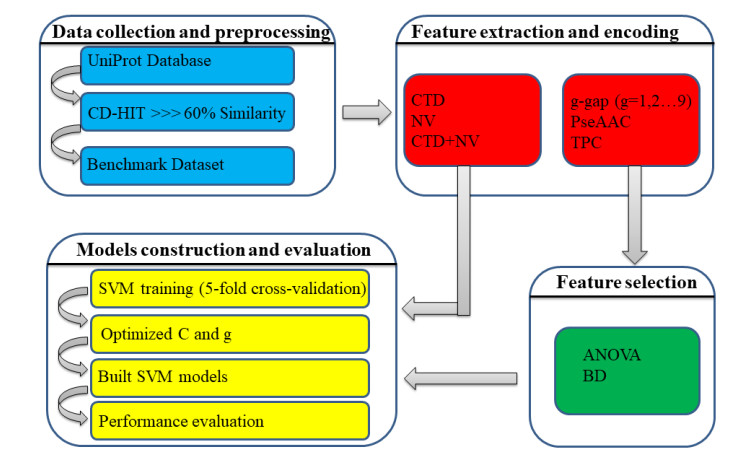









 DownLoad:
DownLoad:
